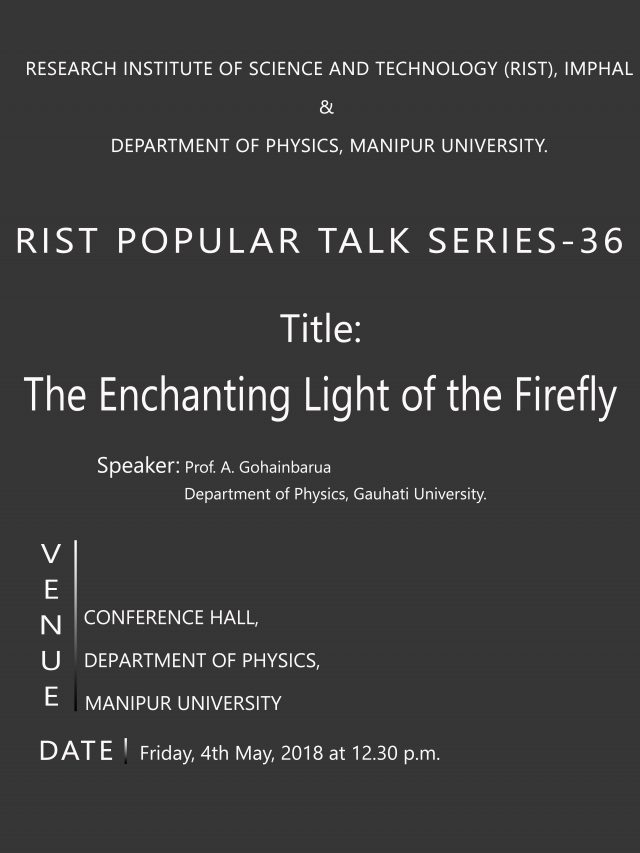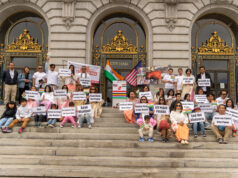2nd May 2018,Imphal :You are cordially invited to attend the monthly popular talk series jointly organized by the RESEARCH INSTITUTE OF SCIENCE AND TECHNOLOGY (RIST), IMPHAL & DEPARTMENT OF PHYSICS, MANIPUR UNIVERSITY.
V E N U E & DATE:
CONFERENCE HALL, DEPARTMENT OF PHYSICS, MANIPUR UNIVERSITY
Friday, 4th May, 2018 at 12.30 p.m.
Title: The Enchanting Light of the Firefly
Speaker: Prof. A. Gohainbarua
Department of Physics, Gauhati University.
Abstract:
The light of the firefly has been attracting the attention of scientists for over a century. The highly efficient light-producing chemiluminescence reaction as well as natural curiosity are the reasons for this interest.
Various aspects of light of the easily available Indian species of firefly Luciola praeusta have been studied by us in recent times, and those will be presented in the talk. Appearance of a sharp intense laser-like line in the emission spectrum at 591 nm has prompted us to draw an analogy with the random laser. With the help of the Michelson interferometer and Young’s double hole system, temporal and spatial coherences have been investigated, and astonishing values have been found. Diffraction patterns produced by a grating will be shown in the talk.The pulses observed in an oscilloscope in the microsecond scale appear to be similar to those from a multimode laser. Those pulses are manifestations of an oscillating chemical reaction, representing both pulse amplitude and pulse width modulations. Under a strong static magnetic field, the pulses tend to combine and produce broad compound ones.
A similar kind of effect is observed when fireflies are kept at low temperatures, below about 20 C. Possibly a slowing down of the conduction of electrical signals in the nerve fiber occurred and the regulation of luciferin–luciferase reaction in the firefly lantern changed after the long term exposure in the strong static magnetic field or exposure at low temperatures. Changes of pulse duration at different temperatures will be shown, and from changes in pulse widths conclusions will be drawn on the
variation of the reaction rate with temperature.
(N. Nimai Singh)
Convener,
RIST monthly popular talk series












